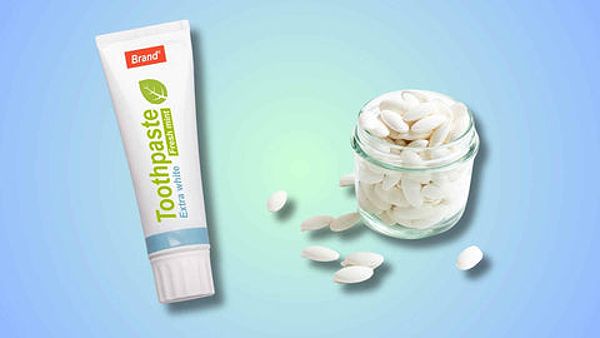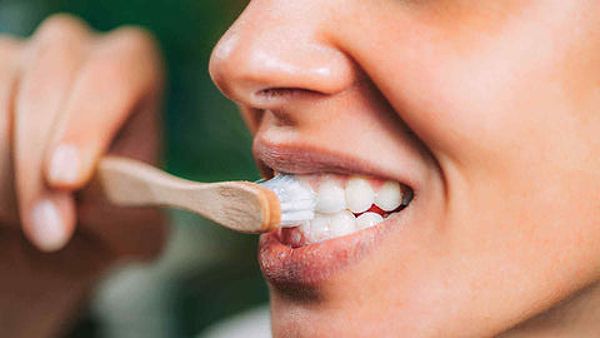Did you know that your saliva plays a crucial role in protecting your teeth? It contains a reservoir of minerals, primarily calcium and phosphate, that are essential for the replacement of minerals in the tooth enamel. This process, called remineralization, is a natural defense mechanism that helps repair early stages of tooth decay and strengthen enamel. However, factors like poor oral hygiene and a diet high in sugary and acidic foods can disrupt this process, leading to weakened enamel and increased risk of cavities.
This article will discuss the science of tooth remineralization, explore practical strategies to support this process, and help you understand how to maintain optimal oral health.
Understanding Tooth Demineralization and Remineralization
Demineralization: When Teeth Lose Minerals
Tooth enamel, the protective outer layer of your teeth, is composed of highly mineralized structures. Unfortunately, this enamel can suffer damage over time, primarily due to the actions of bacteria residing in your mouth. These bacteria thrive on sugars and carbohydrates, producing acids as waste products. When these acids come into contact with your enamel, they can erode its mineral content, leading to a process known as demineralization.
The loss of vital minerals, particularly calcium and phosphate, can compromise the integrity of your enamel. This weakening manifests as rough, porous surfaces and increases your susceptibility to decay. You might notice signs of demineralization, such as white spots on your teeth or heightened sensitivity to temperature changes.
Several factors can accelerate the demineralization process, including:
- Poor Oral Hygiene: Inadequate brushing and flossing can allow plaque to build up, leading to increased acid production.
- Frequent Snacking on Sugary Foods: Regularly consuming sweets can provide a steady supply of fuel for harmful bacteria.
- Consumption of Acidic Beverages: Drinks like soda, fruit juices, and vinegar can lower the pH in your mouth, promoting enamel erosion.
Maintaining a neutral pH level in your mouth is crucial for optimal oral health, as a lower pH promotes demineralization. If the pH drops below a critical level, the balance shifts toward demineralization, making it essential to take steps to protect your enamel.
Remineralization: Replacing Lost Minerals
Fortunately, your mouth has a natural mechanism for repairing enamel damage through remineralization. This process involves the deposition of minerals from your saliva back into the enamel, helping restore its strength and integrity.
Saliva plays a protective role by neutralizing harmful acids and providing a continuous supply of essential minerals. When calcium and phosphate from your saliva come into contact with weakened enamel, they can be incorporated back into the tooth structure. This not only aids in repairing early stages of decay but also helps prevent further damage.
Certain dietary choices can enhance remineralization. Foods rich in calcium and phosphate, such as dairy products, nuts, and leafy greens, are particularly beneficial. Additionally, fluoride—found in many toothpaste brands and drinking water—can strengthen enamel and increase its resistance to acid attacks. This dual approach of dietary support and proper oral hygiene can significantly improve your enamel’s ability to remineralize.

Promoting the Replacement of Minerals in Your Teeth
To support the replacement of minerals in your tooth and maintain strong enamel, consider implementing the following strategies into your daily routine.
Oral Hygiene Practices
Good oral hygiene is critical for creating an environment that supports remineralization. Here are some practical tips:
- Brush Twice Daily: Use a soft-bristled toothbrush and fluoride toothpaste to brush your teeth at least twice a day. This helps remove plaque and food particles that can contribute to decay.
- Floss Regularly: Aim to floss at least three times a week to remove plaque and food particles from between your teeth. This is crucial, as these areas are often missed during brushing.
- Consider an Electric Toothbrush: An electric toothbrush can provide a more thorough cleaning than a manual one. Many models have built-in timers to ensure you brush for the recommended two minutes.
- Use Proper Brushing Technique: Gently scrub your teeth in circular motions, avoiding excessive pressure that could damage your enamel. Focus on all surfaces of your teeth, including the inner, outer, and chewing surfaces.
- Rinse After Brushing: After brushing, rinse your mouth with water or use an alcohol-free mouthwash to eliminate remaining food particles and bacteria.
In addition to these practices, consider scheduling regular dental check-ups. Professional cleanings and assessments can help catch early signs of demineralization or cavities before they become more serious issues.

Dietary Choices
Your diet significantly influences the replacement of minerals in your tooth. To promote remineralization, consider these dietary tips:
- Limit Sugary and Acidic Foods: Reduce your intake of sugary snacks and acidic beverages that can contribute to demineralization. Instead, choose healthier snacks such as fruits, vegetables, and nuts.
- Opt for Calcium and Phosphate-Rich Foods: Incorporate dairy products, leafy greens, nuts, and phosphate-containing foods like meat, fish, and eggs into your meals. These foods provide the necessary building blocks for strong enamel.
- Include Crunchy Fruits and Vegetables: Foods like apples and carrots can stimulate saliva production and help clean your teeth as you chew. These natural cleansers can help remove food particles and plaque.
- Stay Hydrated: Drink plenty of water throughout the day to support saliva production, which is essential for remineralization. Water helps wash away food particles and neutralizes acids in your mouth.
- Use Straws for Acidic Beverages: When consuming acidic drinks, using a straw can minimize contact with your teeth, reducing the risk of enamel erosion.
- Rinse After Consuming Acidic Items: If you indulge in acidic foods or drinks, rinse your mouth with water or use an alkaline mouthwash to neutralize the acidity and help protect your enamel.
Remineralizing Toothpaste
In addition to maintaining good oral hygiene, using a remineralizing toothpaste can further support the replacement of minerals in your tooth. Look for toothpastes that contain ingredients such as nano-hydroxyapatite (nHA) or fluoride.
- Nano-Hydroxyapatite: This synthetic form of the natural mineral found in teeth and bones can bond with enamel, filling in microscopic defects and enhancing tooth structure. nHA has been shown to effectively reduce sensitivity and improve the overall health of enamel.
- Fluoride: This mineral promotes the formation of fluorapatite, a more acid-resistant mineral that can improve remineralization. Fluoride also helps to inhibit the growth of harmful bacteria in your mouth.
Research indicates that toothpaste containing nHA can be particularly effective in repairing early enamel lesions and reducing tooth sensitivity. It’s advisable to consult with your dentist to find the best remineralizing toothpaste for your specific needs. They can guide you on how to incorporate it into your oral care routine effectively.

Signs of Successful Remineralization
As you adopt these strategies into your oral care routine, you may start to notice positive changes in your teeth, indicating that the remineralization process is working effectively. Look for these signs:
- Reduced Sensitivity: You may experience less sensitivity to hot or cold foods and beverages, allowing you to enjoy your favorite treats without discomfort.
- Less Tooth Pain: Pain when chewing or biting may diminish, making meals more enjoyable.
- Smoother Surfaces: Your teeth may feel smoother and less gritty to the touch, indicating that your enamel is becoming healthier.
- Whiter Appearance: You might notice a healthier, whiter look to your teeth, enhancing your smile.
- Fading White Spots: White spots on your teeth may fade or disappear altogether, signifying improved enamel health.
- Improved Oral Health: You may experience fewer cavities and dental issues overall, reflecting the effectiveness of your remineralization efforts.
These signs suggest that the minerals in your saliva are effectively being deposited back into your enamel, strengthening and repairing your tooth structure. It’s essential to remain vigilant and continue with your oral care routine to maintain these improvements.
Additional Tips for Strong Teeth
To further support the replacement of minerals in your tooth and maintain optimal oral health, consider these additional tips:
Use Expandable Floss
Flossing with expandable floss can effectively remove plaque and food debris from hard-to-reach areas between your teeth. The flexible design allows it to adapt to the unique contours of your teeth, providing a more thorough cleaning. This can be particularly beneficial for individuals with braces or dental work.
Limit Acidic Foods
Being mindful of your intake of acidic foods and beverages is essential. Items like citrus fruits, soda, and certain juices can contribute to enamel demineralization. If you consume acidic items, rinse your mouth with water or use an alkaline mouthwash to neutralize the acidity. Additionally, consider consuming acidic foods in moderation and pairing them with non-acidic options to minimize their impact on your enamel.
Choose Alcohol-Free Mouthwash
Alcohol-based mouthwashes can lead to dry mouth, increasing the risk of dental issues. Opt for an alcohol-free mouthwash to enjoy the benefits of freshening your breath and reducing harmful bacteria without causing dryness. Many alcohol-free mouthwashes contain ingredients that promote remineralization and strengthen enamel.
Stay Hydrated
Drinking plenty of water is crucial for maintaining optimal saliva production. Saliva contains the minerals necessary for repairing enamel, and staying hydrated can help wash away food particles and bacteria, promoting oral health. Aim to drink water regularly throughout the day, especially after meals and snacks.
FAQ
Q: How long does it take for remineralization to occur?
A: Remineralization is a gradual process that can take weeks or months, depending on the severity of the enamel damage and individual factors. Consistent oral hygiene practices and remineralizing toothpaste can significantly accelerate the process. Regular dental check-ups can also help monitor your progress.
Q: Can remineralization reverse cavities?
A: While remineralization can repair early enamel damage and prevent further decay, it may not be able to completely reverse a fully formed cavity. Consult a dentist for professional assessment and treatment options. They can guide you on the best course of action based on the extent of the damage.
Q: What if I have dry mouth?
A: Dry mouth can hinder remineralization, as saliva is essential for the process. Consult your dentist or doctor to address dry mouth issues and explore ways to increase saliva production. Options may include using saliva substitutes, chewing sugar-free gum, or staying hydrated.
Conclusion
The replacement of minerals in your tooth is vital for maintaining strong, healthy enamel and preventing dental problems like cavities and sensitivity. By incorporating good oral hygiene practices, making mindful dietary choices, and using remineralizing toothpaste, you can support the natural remineralization process and keep your smile in top condition.
Remember, consistency is key. Stick to a routine that includes brushing, flossing, and using the right oral care products to ensure the long-term health and strength of your teeth. If you have any concerns or questions, don’t hesitate to consult with your dentist for personalized advice and treatment options. Prioritizing your dental health today will lead to a brighter, healthier smile tomorrow.
